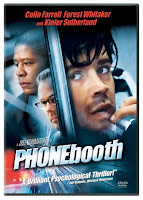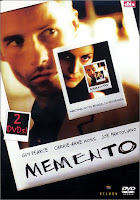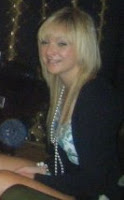Wednesday, 30 September 2009
Introduction to shot type movement
Today in media we looked at all the different shots. All the different shots came under three categories, shots, angles and movements. The Media shots included: Extreme long shot – ELS , Long shot – LS, Medium long shot –MLS, Medium shot – MS, Medium close up- MCU, Close up – CU, Big close up- BCU and Extreme close up – ECU. We looked for pictures for all of these so we could understand all the different shots. Then we looked at angles which included: low angle, high angle, worms eye, birds eye, canted, eye level. We found pictures for these as well and then we looked for the different movements including movements, two shot, over shoulder shot, point of view, pan, crab, tracking, zooming, tilt and ped shot. We also found pictures for all of these. All of these shots were interesting to look at and establish what shots were which, and how we can use these in our own filming to give different effects.
analysing film of choice

Analysing the opening sequence of ‘Se7en'
Today in media we watched the opening sequence of ‘se7en’ created in 1995, directed by David Fincher, starring Gwyneth Paltrow and Brad Pitt. We looked at all the different areas including: the titles, shots, camera movement, generic themes, sound and mise-en-scene. The titles were very shaky, the font flickered and was un-settling, this lead into psychotic movement. The title sequence was very intense and eary and lots of different shots were used. The shot at the very beginning is a close up and identifies a man but not his face. They use a lot of close ups, point of view shot (which shows all of what the character needs), low angle shot to show the dominant character, two shot, panning and tracking shots which follow the actors and the story. Movement of the camera is steady and moves with the actors, the camera was always moving so it’s as if the story was moving along, The generic themes were that the characters were very numb and it was all very naturalistic and Morgan Freeman was an existentialist character which means he is an outsider and does everything on his own. It was easy to establish him as this as his flat was all precise with the single bed well made, and there was no homely feel as there were no pictures of any sort in his flat, this indicates he lives on his own and maybe has no family. As a character he was much more dominant and precise to the character of Brad Pitt who was more involved with the work asking if the children had seen the crime and he was always a bit being Morgan Freeman showing he isn’t as important and all his mannerisms were a bit scatty, as if he wasn’t fully concentrating. Their was a clear difference between the two characters and what positions they hold. There was no music; the whole opening was very hollow. The mise-en-scenes setting were very naturalistic and it’s a fact only natural light is used throughout the film. There was a lot of rain which we could establish as prophetic fallacy, this could reflect the mood of the city and how one crime get washed away then another happens. The costumes were very dull subdued colours, which mixed in with the setting; the main characters didn’t stand out from the setting or any other extras in the film. This as a viewer gave a very naturalistic theme to the movie, as if it was any day in a city somewhere where a crime had been committed.
Analysing the opening sequence of ‘Momento’

Today we watched the opening sequence of ‘Momento’; it was made in 2002 and had Guy Pears as the main actor and Christopher Nolan as the director. We looked at all the different areas including: the titles, shots, camera movement, generic themes, sound and mise-en-scene. The titles slowly faded in an out and the cold blue colour of the font gives a cold, eary effect. There were many different shots including a p.o.v shot, close ups, worms eye view which was used to look at specific objects, use of tilt shots and mixtures of high and low angle shots. The high shot looked over the main actors shoulder to look down on the man facing him on his knees. This showed a sense of authority, and showed which characters were in control. They also used voyeuristic shots to show a type of big brother watching you type of thing. They used different movements of the camera including tilt shots to show the blood drawing back up the wall, this was a type of retrograde effect as the blood crawled down the wall using a tilt shot then drew back up the wall. The generic themes used were murder and flash backs. All of the sound in the first three minutes was non-digetic. The mise-en-scene which includes everything in the scene used a dark setting, neutral coloured clothes, a natural setting of which were all neutral colours. The wore formal clothes which were of a neutral colour scheme so the characters did not stand out from the setting and detract any attention from the story line. The simplicity to the set gives us a feel as the viewer that there is more to the story than meets they eye. The opening sequence of ‘Momento’ was very successful and carefully used all different aspects of a film to create an opening of a thriller type genre. The flashbacks were most effective and created a greater sense of mystery.
Intro to production brief
Today was our first introduction to media. We were told that we would be doing a three minute clip of an opening sequence of a thriller movie, including titles, aimed at a 15 or 18 certificate audience for our final project. A thriller movie is a movie depicting crime, mystery or spying in an atmosphere or excitement and suspense. We discussed the different themes of thrillers which include: crime, spies, chase or quest, enigmas and puzzles to be solved, conspiracy, suspense, assassination, terrorism and lone figure against the system. We discussed how thrillers aren’t gory like horrors but contain some of the same elements like suspense, murder etc. Thrillers usually contain some kind of mystery, although when a mystery climaxes when the crime is solved a thriller climaxes when the hero finally defeats the villain, saving his own life and often the life’s of others.
Thursday, 24 September 2009
Introduction to me...

I am Harley Dunsmore. I am studying AS Media Studies. I enjoy studying media but haven't done it before. I enjoy analysing different movies and understanding how different aspects of a film can give different affects. I also enjoy the practical work and learning how to use cameras and using different shots. I enjoy watching a different variety of films but my favourites are chick flicks but I also enjoy films such as Atonement where flashbacks are used so that the viewer has to figure the story out for themselves.
Subscribe to:
Comments (Atom)



